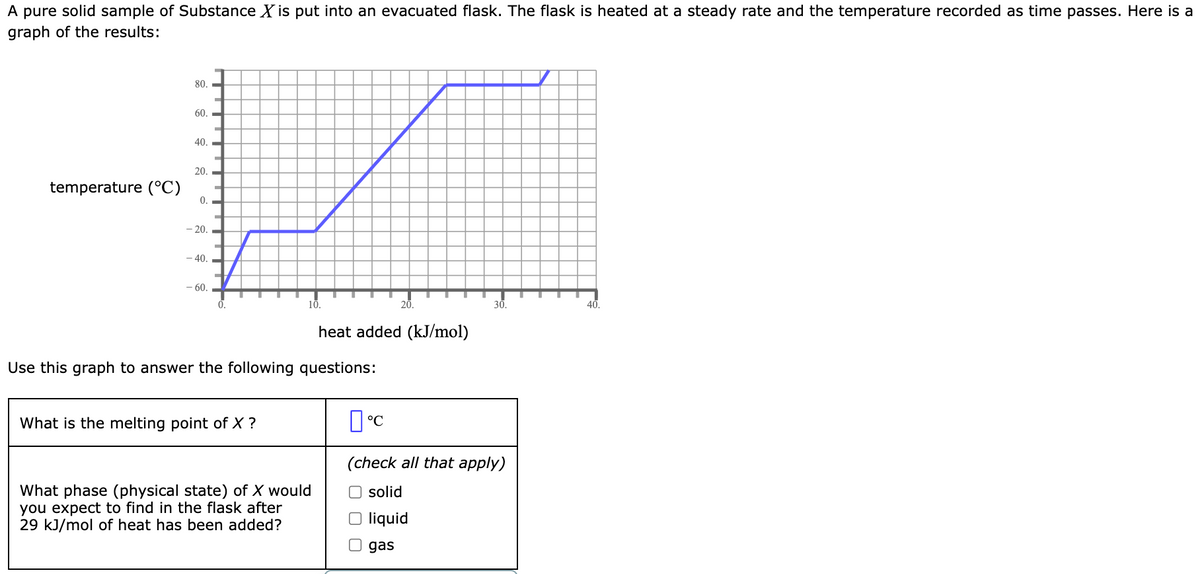A pure solid sample of Substance X is put into an evacuated flask. The flask is heated at a steady rate and the temperature recorded as time passes. Here is graph of the results: 80. - 60. - 40. - 20. - temperature (°C) 0. 20 -40. - - 60. heat added (kJ/mol) Jse this graph to answer the following questions: What is the melting point of X ? (check all that apply) O solid What phase (physical state) of X would you expect to find in the flask after 29 kJ/mol of heat has been added? O liquid O gas
Thermochemistry
Thermochemistry can be considered as a branch of thermodynamics that deals with the connections between warmth, work, and various types of energy, formed because of different synthetic and actual cycles. Thermochemistry describes the energy changes that occur as a result of reactions or chemical changes in a substance.
Exergonic Reaction
The term exergonic is derived from the Greek word in which ‘ergon’ means work and exergonic means ‘work outside’. Exergonic reactions releases work energy. Exergonic reactions are different from exothermic reactions, the one that releases only heat energy during the course of the reaction. So, exothermic reaction is one type of exergonic reaction. Exergonic reaction releases work energy in different forms like heat, light or sound. For example, a glow stick releases light making that an exergonic reaction and not an exothermic reaction since no heat is released. Even endothermic reactions at very high temperature are exergonic.

the temperature versus the heat added curve is known as heating curve.
from the curve we can determine the melting and boiling point as well as the physical state of the substance
Trending now
This is a popular solution!
Step by step
Solved in 4 steps with 1 images









